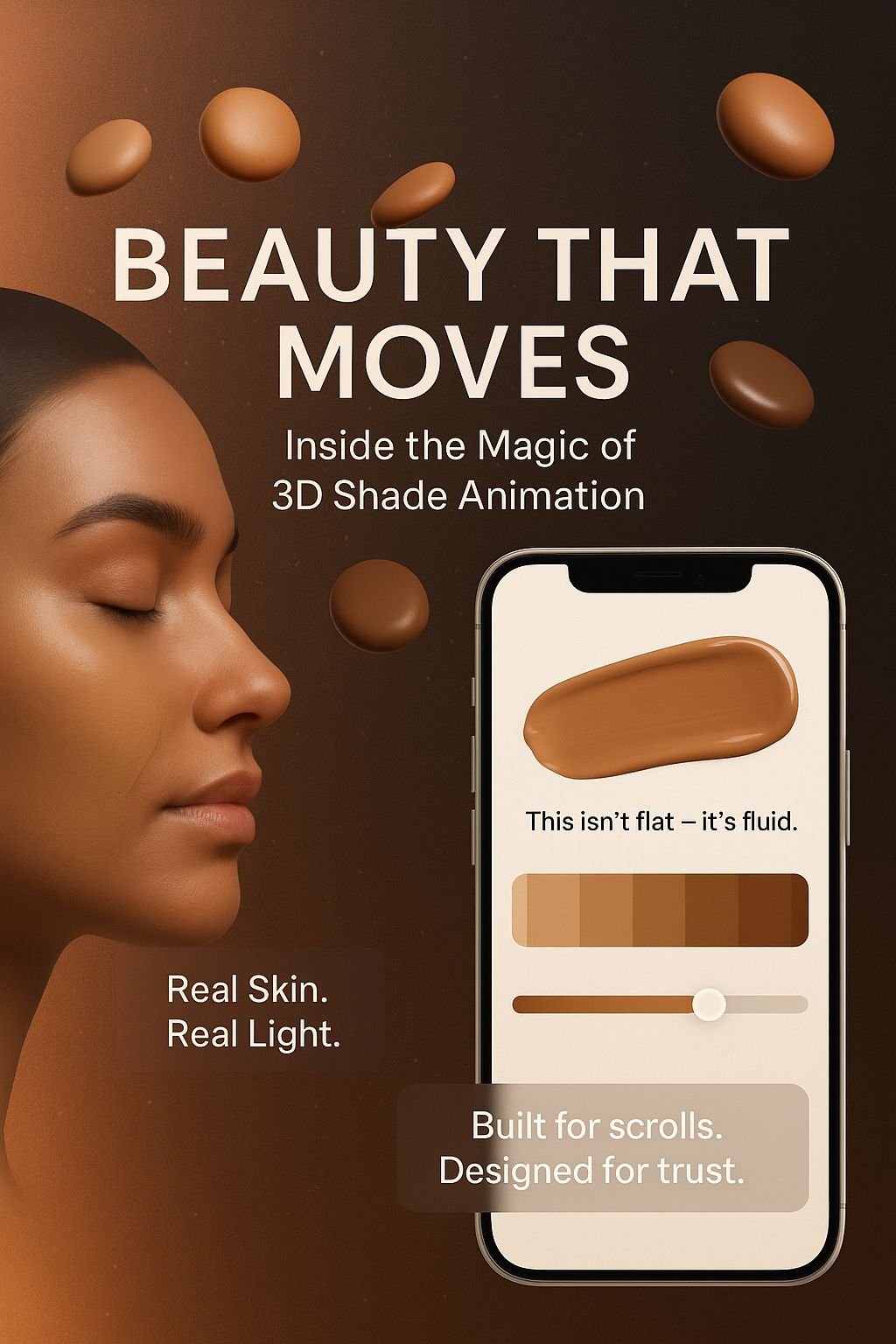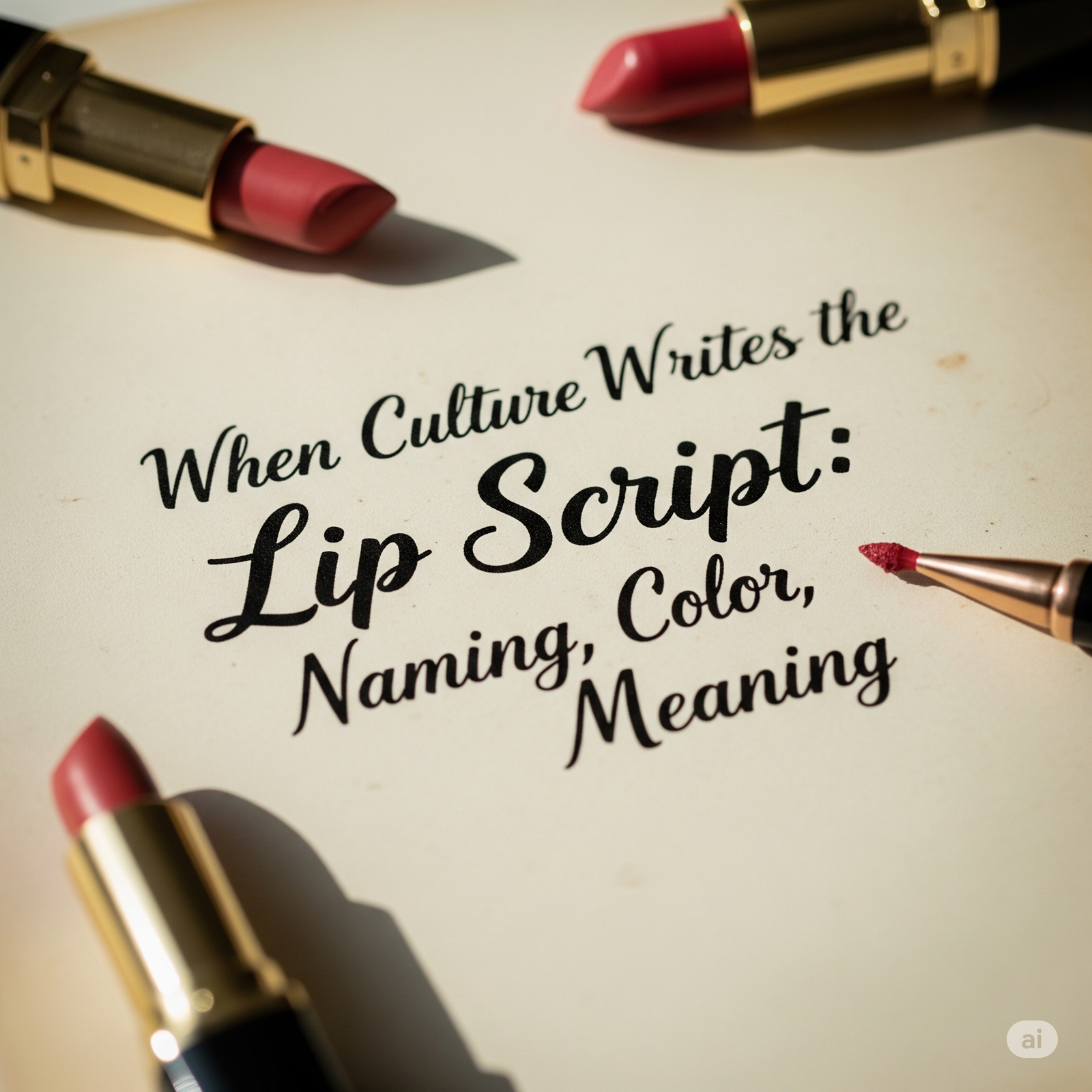Behind the Scenes: Visualizing Inclusive Foundations with 3D Motion
"3D or Don’t Even Talk to Me!"
11 Jun'25
By Yugadya Dubey


Behind the Scenes: Visualizing Inclusive Foundations with 3D Motion
Ever swiped through a foundation line only to feel nothing matches you? Flat swatches, ideal lab lighting, and flat product shots won’t cut it anymore. Enter 3D beauty animation—the tech that turns shade matching into an experience. By combining realistic skin tone rendering with dynamic visuals, brands can build trust, boost engagement, and celebrate diversity. Here's how it all works.
Realistic Skin Tones & Textures
Creating foundation visuals that actually look like skin, with all its depth, pores, subtle sheen, and warmth, is an art and a science. Studios lean on tools like NVIDIA’s subsurface scattering (SSS) to mimic how light penetrates, bounces, and diffuses through skin.
Also, light-stage capture (the tech used to replicate Barack Obama’s face in “The Matrix”) uses dozens of angled light sources and cameras to digitally record how different skin tones respond to light. This data feeds into 3D shaders that reproduce that richness in real time.
Then there’s texture mapping—where high-res scans capture skin pores, freckles, texture variation, and even fine facial hair. By layering specular maps, normal maps, and SSS passes, animators recreate living, breathing skin across shades.
How Light Plays on Different Tones
When you blur the lines between AR demos and real people, you need accurate light behaviour. Richer and deeper tones can appear flat or ashy under harsh lighting. That’s where real-time rendering and HDR support come in, letting your visuals react to simulated daylight, indoor, flash, or ring light scenarios.
Brands like Burberry Beauty and Sephora already use AR-powered mirrors and smart lighting to show how products shift under movement, and it works.
Seeing skin’s glow, undertone shifts, warmth, and depth—live—supports better purchase confidence.
Here’s a peek at the tech stack making it happen:
- 3D Modeling & Shading Engines: Blender, Pixar RenderMan, Unreal or Unity + Reallusion—stacked with SSS and HDR shaders.
- Neural Rendering & AI: Next-gen tools like neural implicit rendering add ultra-photorealism, improving tone consistency across dark and light shades.
- AR SDKs & WebGL: Live try-ons now happen in browsers and apps via Beauty AR SDKs (Sephora’s smart mirror, Banuba)
Global Beauty Industry Use Cases
This approach isn’t optional. Brands worldwide are levelling up:
- Burberry Beauty Virtual Studio uses live face tracking and AR tutorials, overlaying makeup visuals that stick to your skin in motion.
- Sephora’s 3D Beauty Mirror lets you swipe realistic foundation swatches live, lighting included.
- BrandXR & IdeaUsher report brands in the Metaverse offering stunning virtual try-ons, boosting accuracy and engagement.
- CGI product animation: Following guides like Greyscalegorilla’s, brands now display hyper-realistic product-spin videos with lifelike textures and sheen.
Your Partner in Next‑Gen Foundation Marketing
And here’s where Admigos shines. We elevate visuals into emotional connections. With 3D motion mapping of shade lines and real-time sliders, brands can:
- Match Real Light & Skin: Scan and animate shades across the lighting spectrum, bringing them to life.
- Animate Swatches That Pop: Instead of static previews, sliders that move through shades with realistic transitions and textural depth.
- Layer Skin Assets: From micro pores to fine lines, overlays add realism that flat images just can’t match.
- Deploy Across Channels: From mobile try-on to web sliders to in-store AR mirrors, the same assets adapt everywhere.
Whether you're launching a new line or rebranding, our 3D shade reels aren’t about gimmicks—they’re about trust, depth, and staying ahead.
Why 3D Motion Works: The Bottom Line

Benefits of using Modern Tech Features for Beauty Brands
Final Thoughts
In 2025, shade inclusivity isn’t just saying you covered deep, medium, and fair—it’s showing it in motion. When animation meets accurate reflection, brands show empathy and build trust.
So ditch blurry swatches. Scale up with 3D beauty animation. Let light reveal undertones, textures, and warmth to every viewer. Because when skin tone rendering feels real and moves in sync with real life, that’s when brands stop guessing and start converting.
And with Admigos as your partner? You’ll be not just launching shades, but launching experiences.
— By Yugadya Dubey
When Culture Writes the Lip Script: Naming, Color, Meaning
More Than Color: How Lipsticks Reflect Our Roots

Visualizing Monolid Magic: Less Crease, More Creativity
A dive into monolid eye makeup tips, trendy liner styles, and eyeshadow ideas. Explore product picks and visual tools like Admigos for your perfect monolid eyeshadow look.
